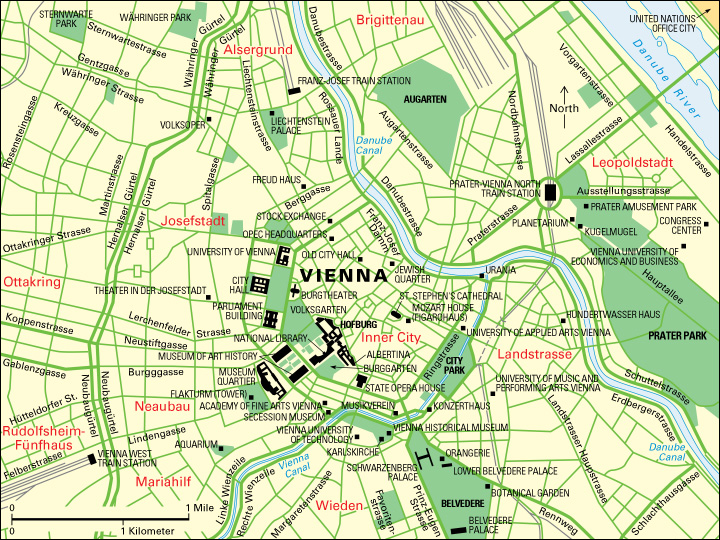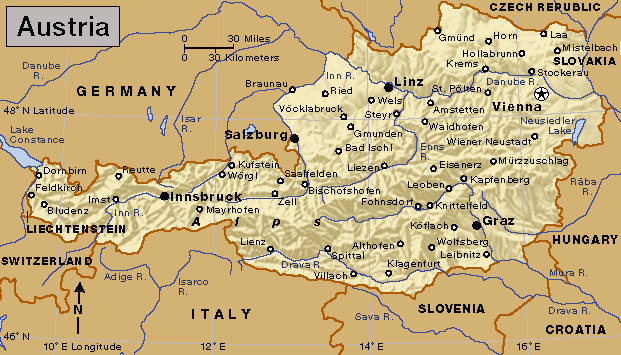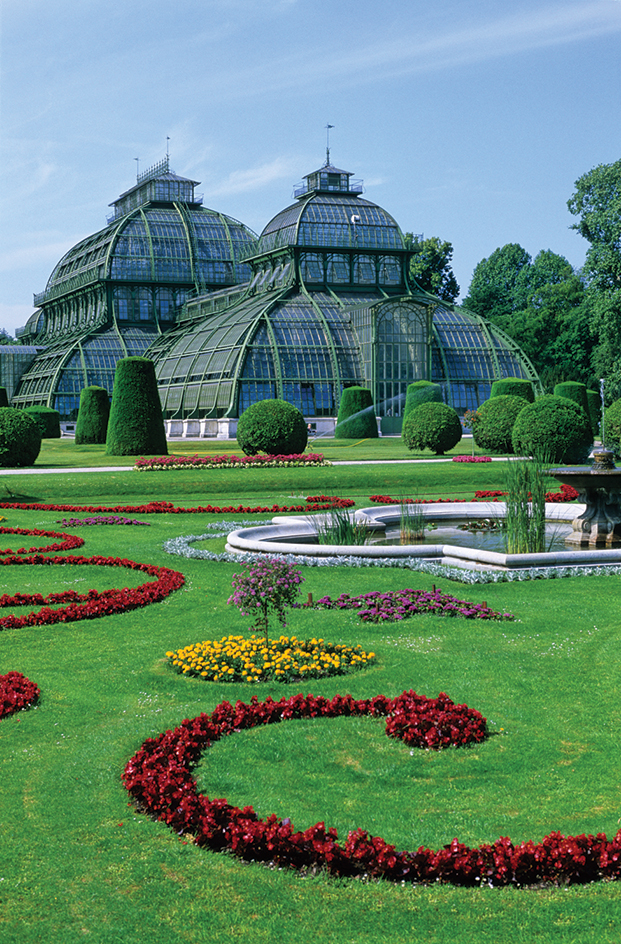Vienna << vee EHN uh >> (pop. 1,982,097) is the capital and largest city of Austria. The city lies in northeastern Austria, on the south bank of the Danube River. Vienna is Austria’s leading cultural, economic, and political center. The city’s name in German is Wien.

Vienna became the capital of the duchy (territory ruled by a duke) of Austria in 1150, under the Babenberg dynasty. The Habsburg (or Hapsburg) family acquired the Babenberg lands in 1278. Vienna was the base for the Habsburgs for most of the years until 1918. In the 1700’s and 1800’s, Vienna won fame as a center of medicine, music, and theater. The Habsburg dynasty collapsed at the end of World War I (1914-1918), and Vienna lost much of its political importance. Between 1938 and 1945, the murder of most of Vienna’s Jewish population under Nazi rule devastated the city’s cultural life. In 1979, Vienna became an official United Nations (UN) seat, and many important UN offices are housed there. A number of other international organizations also have offices in Vienna.
The city
covers about 160 square miles (415 square kilometers) at the eastern end of a narrow plain between the Carpathian Mountains and the Alps. An important mountain gap through the Carpathians is just east of Vienna. The city’s location at this transportation crossroads played an important role in its growth and economic development.
Loading the player...St. Peter's Church in Vienna
The old “Inner City” forms the center of Vienna. This area includes many of the city’s historical buildings and landmarks, as well as its most fashionable shopping districts. The famous St. Stephen’s Cathedral stands at the heart of the Inner City. Several blocks west is the Hofburg, a palace that consists of both modern buildings and medieval structures. The palace includes the royal apartments, now occupied by the president of Austria; the National Library; several museums; and the Spanish Riding School. Nearby lie two of Vienna’s most beautiful parks, the Burggarten and the Volksgarten.
Loading the player...Vienna Town Hall
A band of streets called the Ringstrasse encircles the Inner City. Some of Vienna’s most impressive public buildings line these streets. They include City Hall, the Museum of Art History, the Opera House, the Parliament Building, and the Stock Exchange. These buildings date from the second half of the 1800’s.
The older suburban districts of the city lie outside the Ringstrasse. They became part of Vienna in the 1800’s. Several important buildings are in the suburbs, including the Karlskirche (Church of St. Charles) and the Belvedere Palace. These structures rank among the finest existing examples of Baroque architecture, a highly decorative style that developed in the 1600’s and 1700’s.
Loading the player...Schönbrunn Palace in Vienna
The noted Austrian architect Johann Bernhard Fischer von Erlach designed several Viennese buildings, including the Karlskirche and the Schönbrunn Palace. The palace stands at the southwestern edge of the city. The Schönbrunn Zoo lies on the palace grounds. Built in 1752, it is the world’s oldest zoo. A long park called the Prater is north of Vienna along the Danube. The Vienna Woods line the western edge of the city.
The people.
Most Viennese are German-speaking Austrians. Some of Vienna’s people have roots in the other European lands that the Habsburgs ruled. Viennese people wear clothing similar to that worn in the United States. People in Vienna often dress up, especially during Fasching, the Austrian carnival season that includes many formal dances. Some Viennese wear Austrian folk costumes on special occasions.
Viennese foods reflect the mixture of nationalities in the city. A favorite Viennese pastime is to gather at a coffee house or at a Konditorei (pastry shop). People also enjoy visiting the wine houses north and west of the city to drink freshly made wine, called Heurigen.
Most Viennese own or rent apartments in four- or five-story buildings. Some suburban families live in their own homes. The city has built apartment complexes to replace residences that were destroyed during World War II (1939-1945).
Education and cultural life.
Vienna is the home of many fine institutions of higher learning. They include the Academy of Fine Arts Vienna, the University of Music and Performing Arts Vienna, the University of Vienna, and the Vienna University of Technology.
Vienna has many famous museums and art galleries, including the Albertina, the Belvedere, and the Museum of Art History. It has several libraries, including the National Library. Musical venues include the Konzerthaus, the Musikverein, the State Opera House, and the Volksoper. The Vienna Boys’ Choir sings every Sunday in the Hofburgkapelle (Hofburg Chapel). Major theaters include the Burgtheater and the Theater in der Josefstadt.

Many famous artists, scholars, scientists, and writers have lived in Vienna. Such composers as Ludwig van Beethoven, Johannes Brahms, Joseph Haydn, Wolfgang Amadeus Mozart, and Franz Schubert resided there.
Economy.
Vienna is Austria’s chief industrial city. Its industries manufacture chemicals, clothing, leatherware, and medicine. The city is also Austria’s administrative, communications, and financial center. Vienna has an excellent system of public transportation, with buses, streetcars, and a subway train system. Most people use public transportation, but automobile use has grown.
History.
People have lived in what is now Vienna since prehistoric times. In 15 B.C., the Romans established a frontier post there named Vindobona. They ruled the area until Germanic tribes took over in the late A.D. 400’s. During the late 800’s, the Magyars, a people who founded Hungary, gained control of Vienna. German forces conquered the city in the late 900’s. In 1150, Vienna became the main residence for the ruling Babenberg family.


In 1273, Rudolf I of the Habsburg family became Holy Roman emperor. In 1278, he acquired the Austrian lands for the Habsburgs. Vienna prospered as the seat of the Habsburg dynasty. Armies of the Ottoman Empire besieged Vienna in 1529 and again in 1683, but they failed to capture the city. Some of Vienna’s beautiful Baroque palaces and churches were built during the early 1700’s.
French forces seized Vienna twice during the Napoleonic Wars (1796-1815). The Habsburg defeat in World War I reduced Vienna to capital of the small Austrian republic. German troops occupied the city from 1938 to the end of World War II in 1945. Allied bombing badly damaged Vienna during the war. From 1945 to 1955, the city was under the joint control of the Allied powers.
Austria’s postwar economic boom helped restore Vienna’s prosperity. The city rebuilt most of its destroyed or damaged landmarks. In 1965, Vienna became the headquarters of the Organization of the Petroleum Exporting Countries (OPEC). Beginning in the 1970’s, new hotels and an expanded subway system were built. A center for UN agencies opened in 1979.
